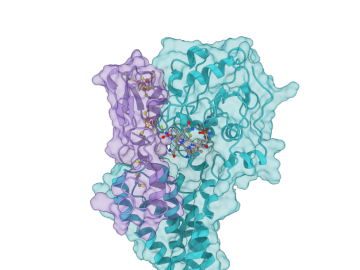
Filter News
Area of Research
- (-) Energy Science (78)
- (-) Functional Materials for Energy (1)
- (-) Nuclear Science and Technology (17)
- Advanced Manufacturing (8)
- Biological Systems (1)
- Biology and Environment (52)
- Building Technologies (1)
- Computational Biology (2)
- Computational Engineering (3)
- Computer Science (16)
- Electricity and Smart Grid (1)
- Fusion and Fission (7)
- Fusion Energy (4)
- Isotope Development and Production (1)
- Isotopes (28)
- Materials (130)
- Materials Characterization (1)
- Materials for Computing (20)
- Materials Under Extremes (1)
- Mathematics (1)
- National Security (37)
- Neutron Science (129)
- Quantum information Science (6)
- Supercomputing (119)
- Transportation Systems (1)
News Topics
- (-) Big Data (5)
- (-) Biomedical (8)
- (-) Computer Science (27)
- (-) Cybersecurity (9)
- (-) Isotopes (6)
- (-) Materials Science (29)
- (-) Mercury (3)
- (-) Neutron Science (15)
- (-) Physics (3)
- (-) Space Exploration (7)
- 3-D Printing/Advanced Manufacturing (82)
- Advanced Reactors (15)
- Artificial Intelligence (8)
- Bioenergy (26)
- Biology (11)
- Biotechnology (4)
- Buildings (38)
- Chemical Sciences (14)
- Clean Water (8)
- Composites (17)
- Coronavirus (13)
- Critical Materials (9)
- Energy Storage (72)
- Environment (54)
- Exascale Computing (2)
- Fossil Energy (2)
- Frontier (2)
- Fusion (9)
- Grid (39)
- High-Performance Computing (6)
- Hydropower (3)
- Machine Learning (7)
- Materials (36)
- Mathematics (2)
- Microelectronics (1)
- Microscopy (8)
- Molten Salt (5)
- Nanotechnology (8)
- National Security (5)
- Nuclear Energy (41)
- Partnerships (12)
- Polymers (11)
- Quantum Science (2)
- Security (6)
- Simulation (4)
- Statistics (1)
- Summit (4)
- Transportation (66)
Media Contacts

Radioactive isotopes power some of NASA’s best-known spacecraft. But predicting how radiation emitted from these isotopes might affect nearby materials is tricky

Two staff members at the Department of Energy’s Oak Ridge National Laboratory have received prestigious HENAAC and Luminary Awards from Great Minds in STEM, a nonprofit organization that focuses on promoting STEM careers in underserved

A team led by ORNL created a computational model of the proteins responsible for the transformation of mercury to toxic methylmercury, marking a step forward in understanding how the reaction occurs and how mercury cycles through the environment.

After its long journey to Mars beginning this summer, NASA’s Perseverance rover will be powered across the planet’s surface in part by plutonium produced at the Department of Energy’s Oak Ridge National Laboratory.

ORNL researchers have developed an intelligent power electronic inverter platform that can connect locally sited energy resources such as solar panels, energy storage and electric vehicles and smoothly interact with the utility power grid.

Five researchers at the Department of Energy’s Oak Ridge National Laboratory have been named ORNL Corporate Fellows in recognition of significant career accomplishments and continued leadership in their scientific fields.

Scientists at ORNL used neutron scattering and supercomputing to better understand how an organic solvent and water work together to break down plant biomass, creating a pathway to significantly improve the production of renewable

Oak Ridge National Laboratory scientists seeking the source of charge loss in lithium-ion batteries demonstrated that coupling a thin-film cathode with a solid electrolyte is a rapid way to determine the root cause.

Ada Sedova’s journey to Oak Ridge National Laboratory has taken her on the path from pre-med studies in college to an accelerated graduate career in mathematics and biophysics and now to the intersection of computational science and biology

The Department of Energy’s Office of Science has selected three Oak Ridge National Laboratory scientists for Early Career Research Program awards.


